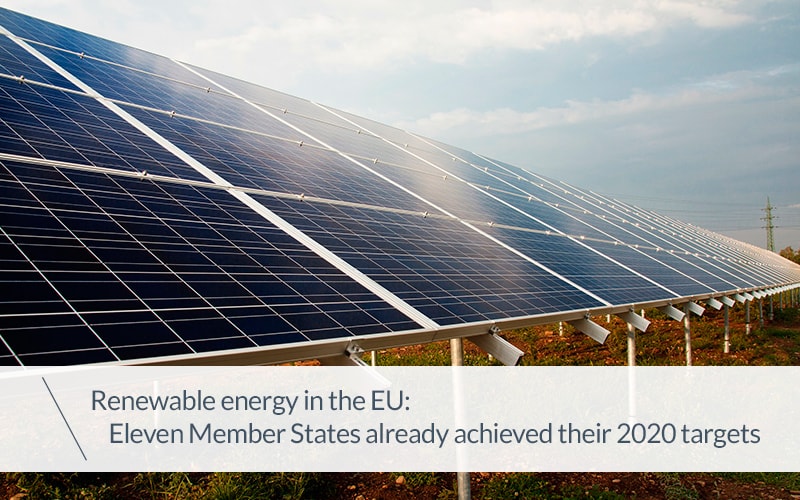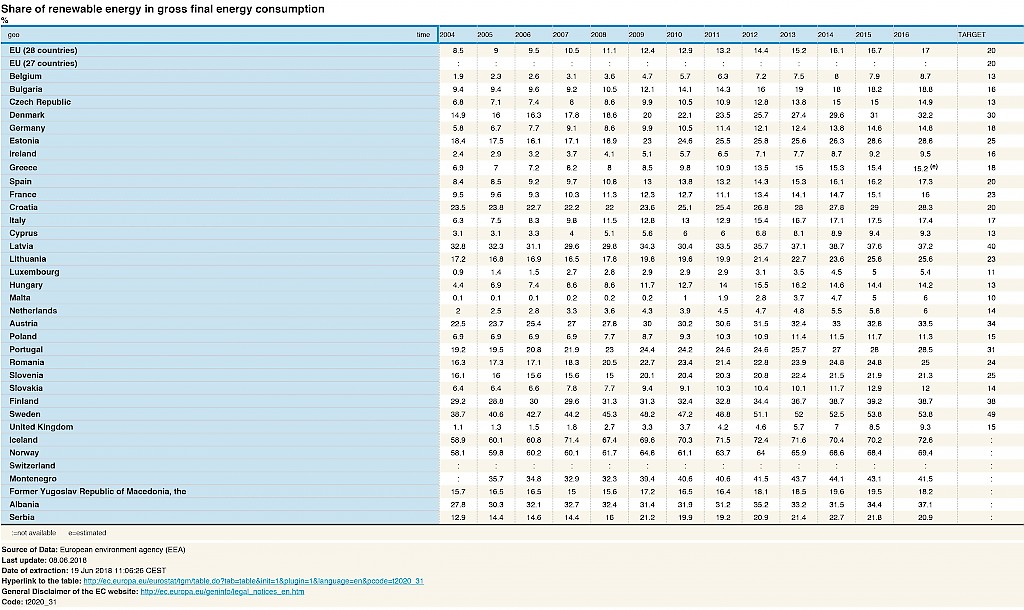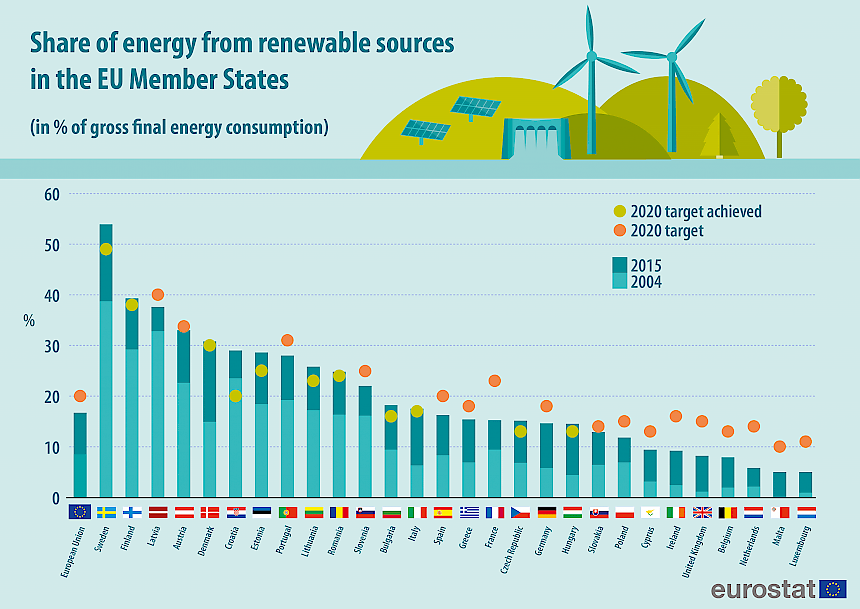
A press release dated the 25th January 2018 from the European Commission based on data collected by Eurostat, shows that 11 EU state members already reached the goals set for 2020 regards the consumption of renewable energies.
European strategy 2020 forecasts reaching 20% in renewables, as a percentage of the overall energy market, going up to 27% before 2030.
Europe, with 28 member states is a long way off this goal. In 2017 they reached an average of just 17%; double when compared to the first survey conducted in 2014.
The poor performance of several European countries must draw a line for the EU, even if many member states have reached truly encouraging results, often extraordinary (Sweden for example).
Each member state has identified different goals to reach.
The EU has two different gears. And this is also evident regards the relative production/consumption data of renewable energies in member states.
Before taking a look at the results of the study carried out by Eurostat, we should underline the importance of a vital concept. Twenty percent of renewable energies is a community goal, generated by calculating an average from the percentages of each member country, but every single state has its own individual target.
Despite reaching and/or surpassing the 20% goal, it is not true that this result is coherent with having reached pre-set objectives because in some cases they are in fact higher.
Of course, in other cases, the desired result has been gained despite not hitting the 20% mark.
The following table contains the percentages reach from 2014, showing the goal for each country.

Which countries reached 2020 goals
The countries which have reached the 2020 goals which they pre-determined - so, not necessarily 20% - are the following 11:
Sweden: 53.8%, goal set at 49%
Finland: 38.7%, goal set at 38%
Denmark: 32.2%, goal set at 32%
Estonia: 28.8%, goal set at 25%
Croatia: 28.3%, goal set at 20%
Lithuania: 25.6%, goal set at 23%
Romania: 25%, goal set at 24%
Bulgaria: 18.8%, goal set at 16%
Italy: 17.4%, goal set at 17%
Czech Republic: 14.9%, goal set at 13%
Hungary: 14.2%, goal set at 13%

As can be seen in this diagram, some member states are above 20% renewables, even though they have not reached the 2020 goal: Lithuania, Austria, Portugal and Slovenia.
Disappointing results come from countries such as France, United Kingdom, Ireland and Luxembourg who are way off their targets.
It is worth noting however, that data collection is only up to 2016, and there are still two more years until 2020, which gives us hope that the community goal will be reached and that further growth in renewable energy consumption in the EU will take place.



